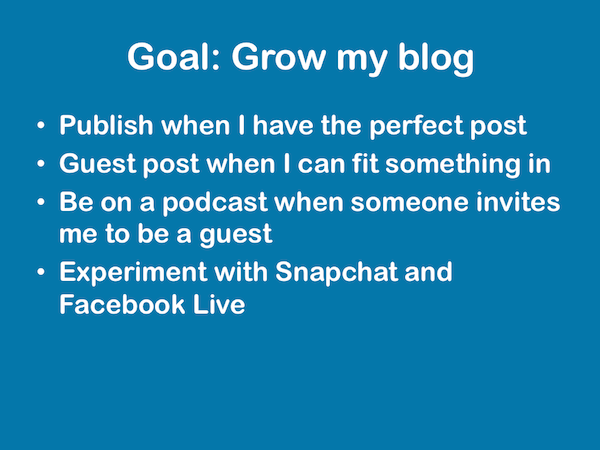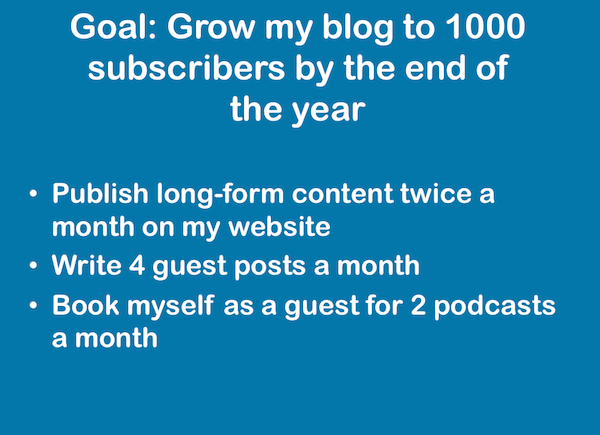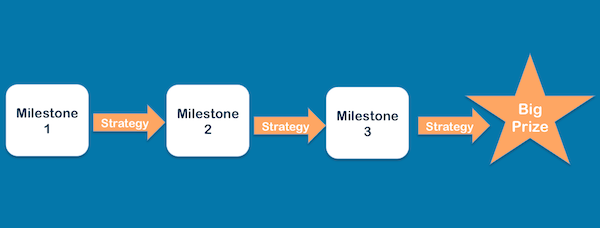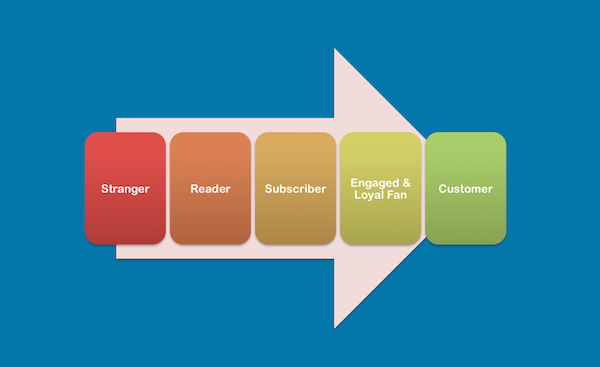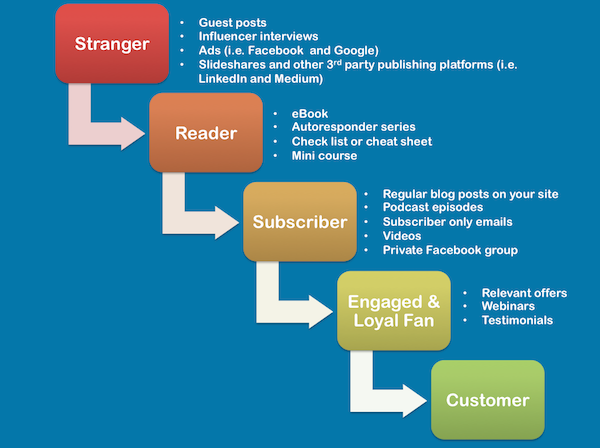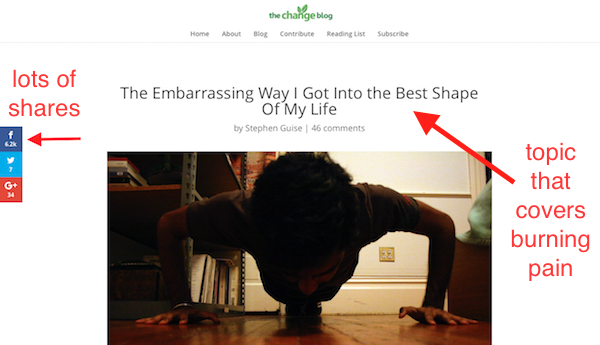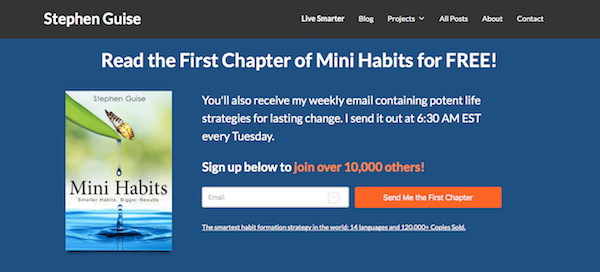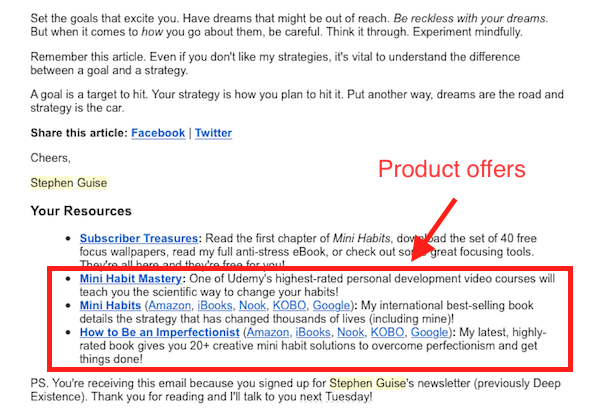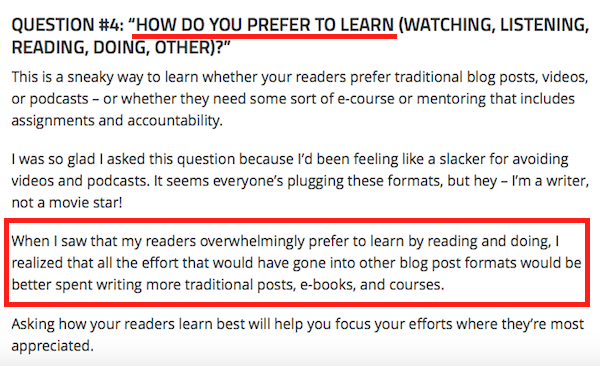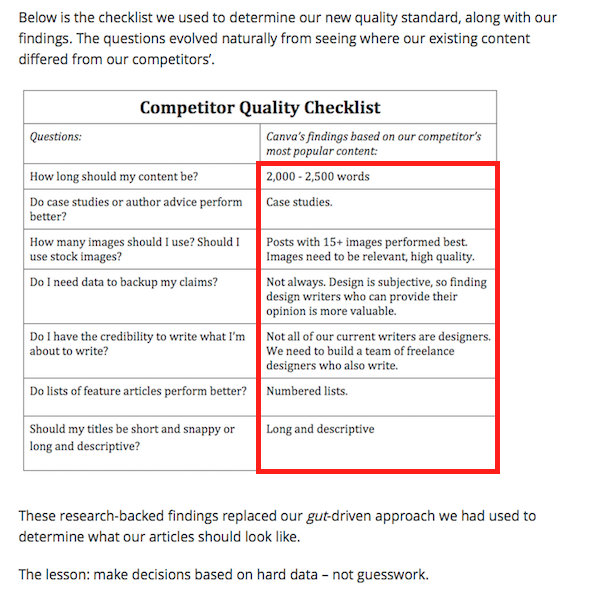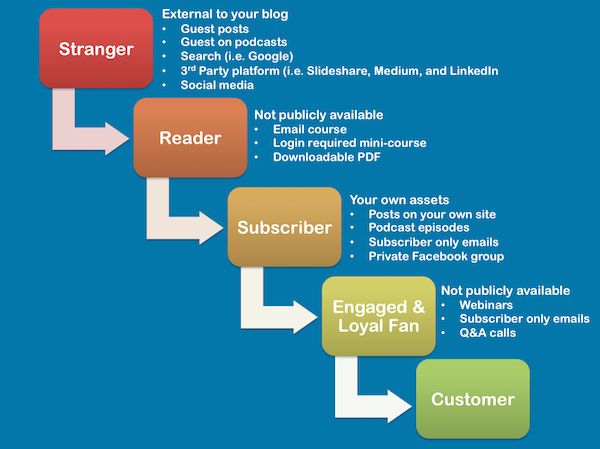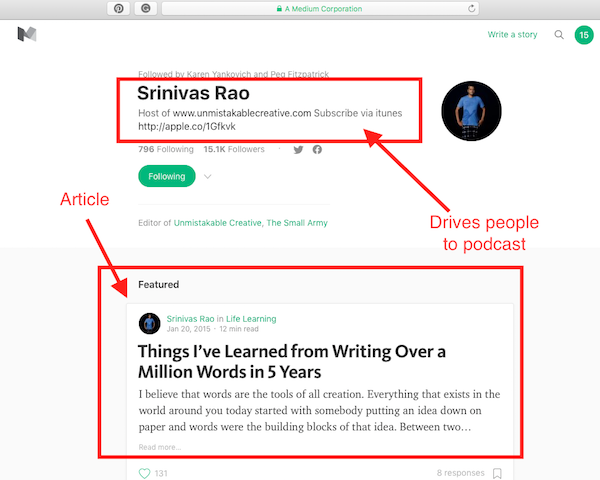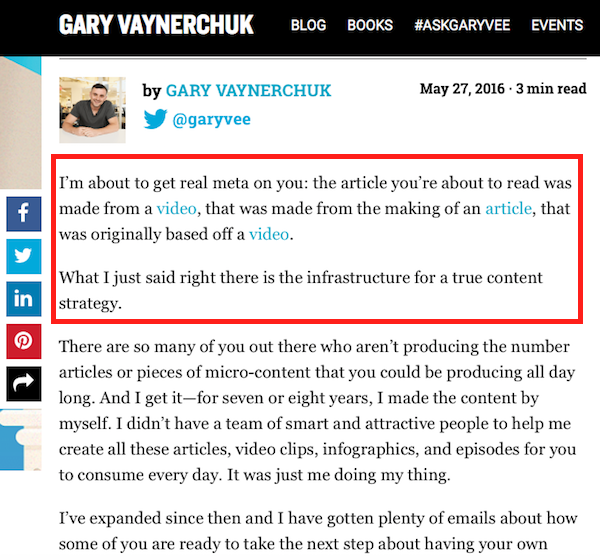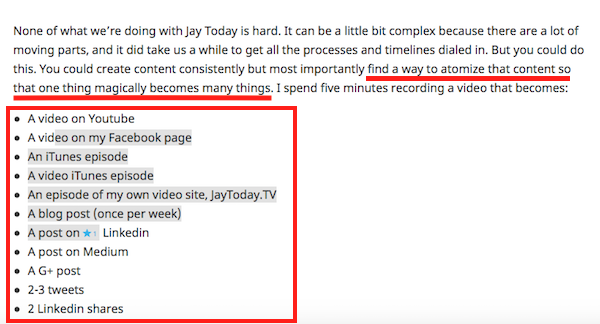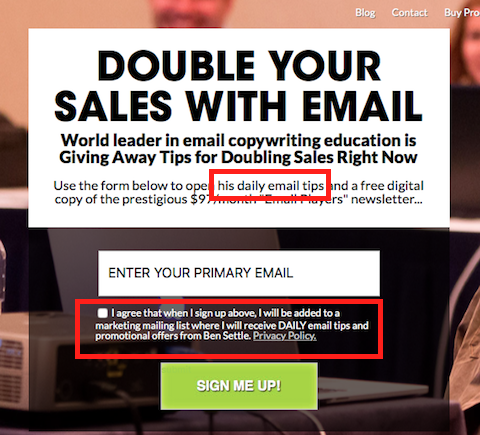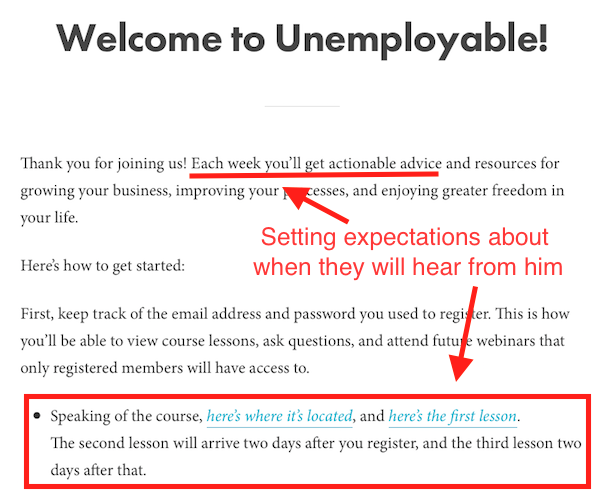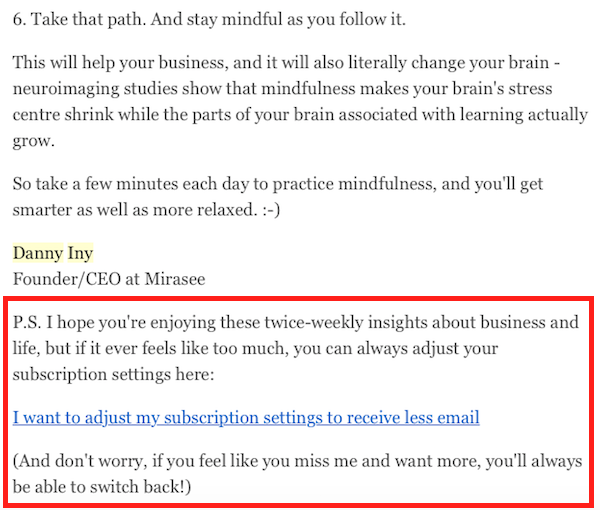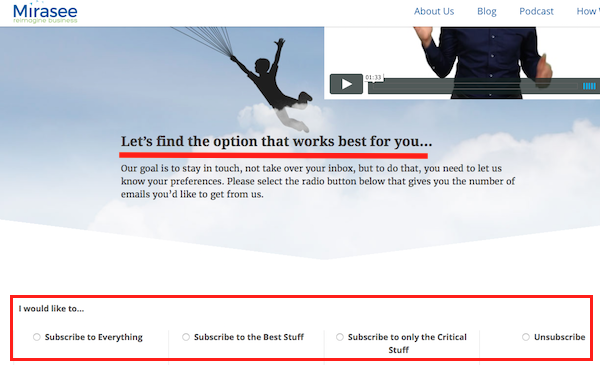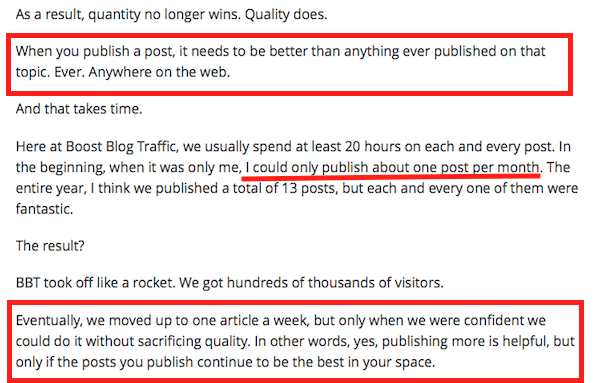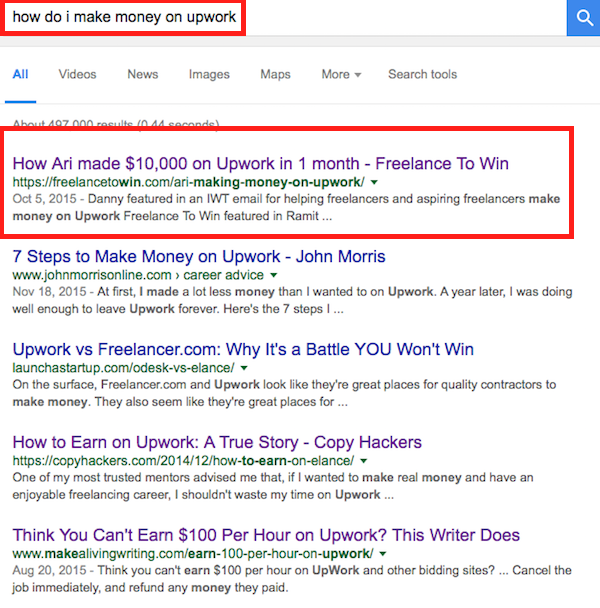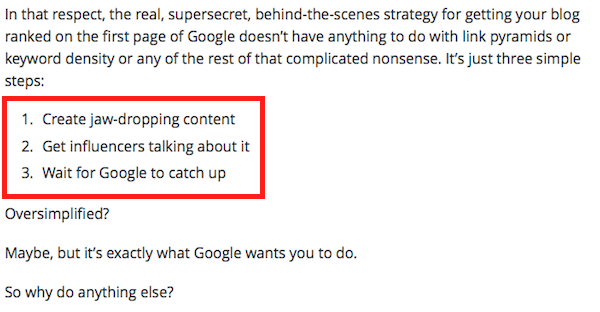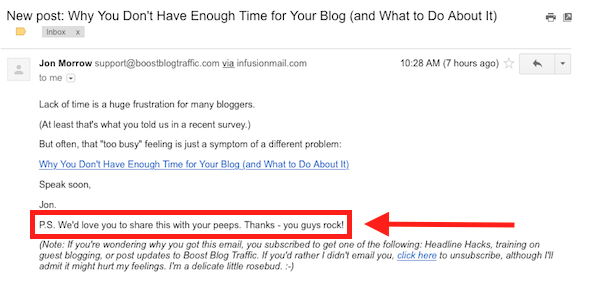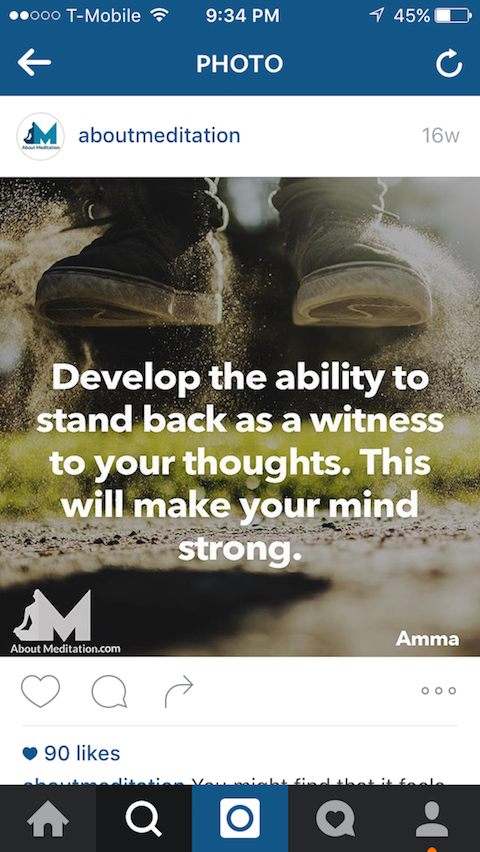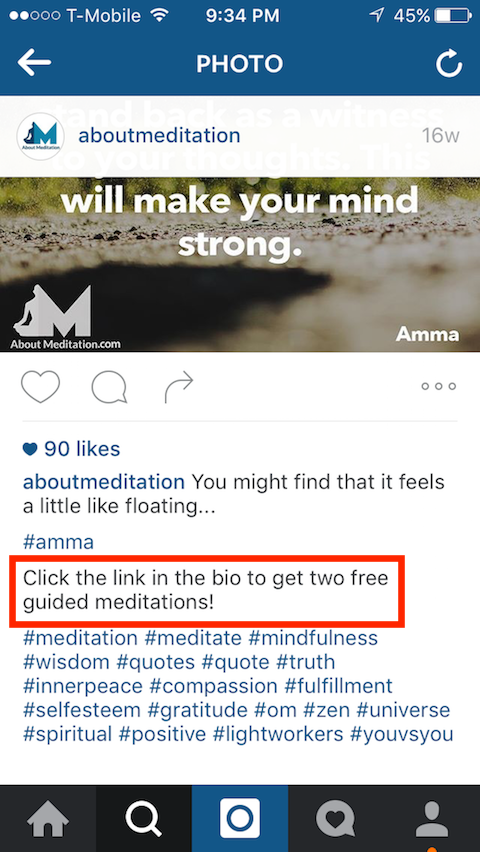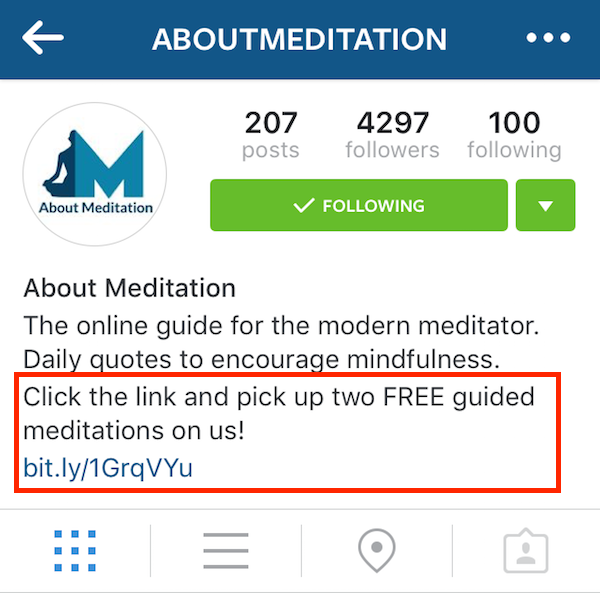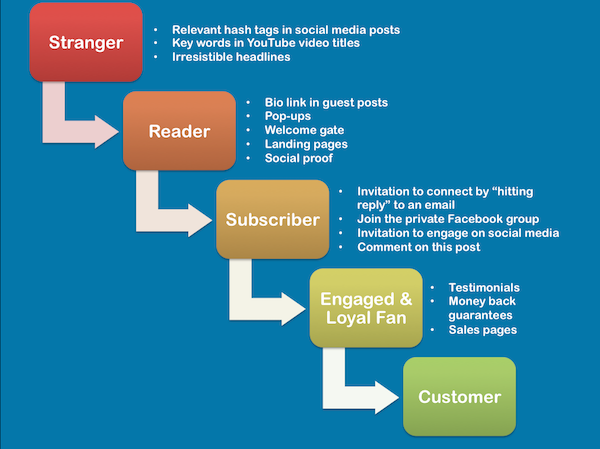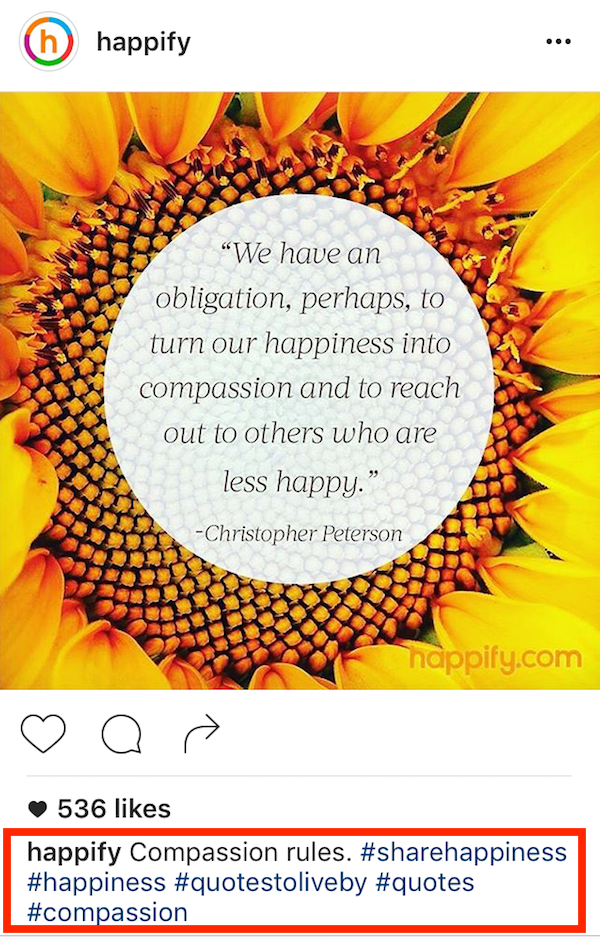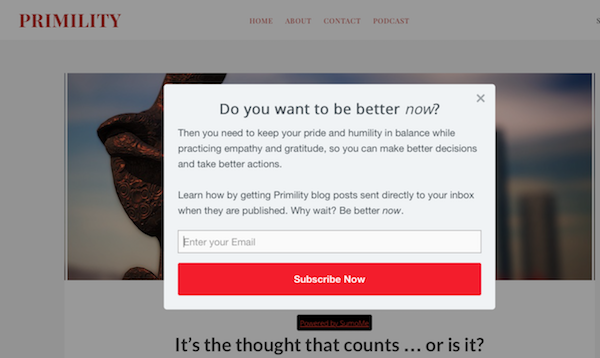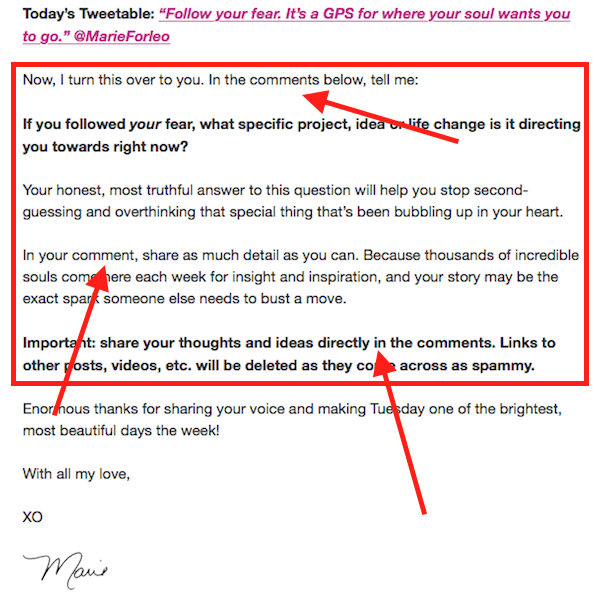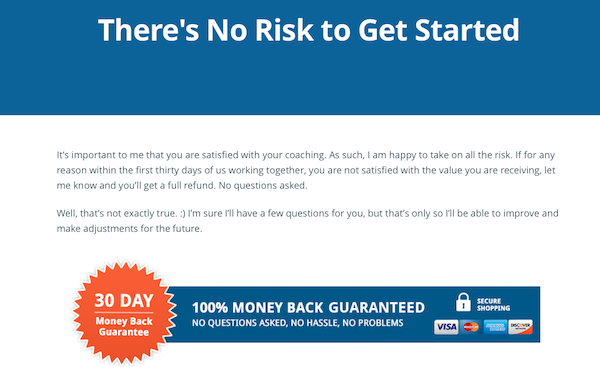
Admit it.
You’ve thought about writing an e-book.
In fact, you’ve already imagined the front cover.
You can see the main title, and underneath, your name.
And when you picture it, you feel a ripple of pride.
An e-book would be a big step up for you as a writer.
Because while blog posts are a great way to express your ideas, you can’t help feeling they’re a little, well, fleeting. Lightweight even.
Whereas an e-book is more substantial. It’s taken more seriously. It has more gravitas.
And having an e-book with your name on the front transforms you from a mere blogger into that more impressive beast – an author.
But how do you become an e-book author without falling victim to the same mistakes that sabotage the attempts of so many other bloggers?
Three Rock-Solid Reasons to Write Your First E-book
Before looking at our list of mistakes, let’s take a quick look at why writing an e-book is not just attractive to many bloggers, but also a smart move.
1) A Valuable E-book is a Powerful Sign-up Incentive for New Subscribers
Does your email list grow s-l-o-w-l-y, with perhaps one or two new subscribers each week … at best?
The truth is that readers are reluctant to hand over their email addresses – even if they love your content. So they may need a little extra nudge to sign up (you could even call it a bribe).
An e-book packed full of valuable content makes a great incentive. If you can offer free information your audience would gladly pay for, you’ll see dramatic improvements in your sign-up rates.
2) A Premium E-book Allows You to Make Some Real Money From Your Blog
When I started blogging, it took me 11 months of writing three to five posts per week to get my first AdSense check for $100.
That’s because in the real world, you need a huge blog to make any real money from advertising.
The following year, I launched an e-book that paid for me to go to the SXSW conference (flights, ticket, hotel and all) … and that e-book continues to sell for me today.
If you’re earning pennies from ads or you haven’t managed to monetize your blog yet, then an e-book could transform your blog from a fun hobby into a real money earner.
3) An Authoritative E-book Positions You as an Expert in Your Field
If you want to build a name for yourself in your field, an e-book is a great way to boost your credibility and authority.
By publishing on Amazon, you can appear literally alongside some of the biggest names in your industry.
In fact, you may find you get more reviews and attention than much better-known authors who are simply less web-savvy.
Why Most E-books Are Embarrassingly Bad
On the surface, writing an e-book seems relatively easy.
Lots of bloggers seem to be doing it, so how hard can it be?
But in reality, most e-books that see the light of day are horrible. Embarrassingly bad.
That’s because your average e-book author doesn’t have a clue about writing a book. And they don’t have any of the support that a traditional author would be given by their publisher.
But producing a quality e-book is almost as hard as publishing a traditional book. The basic tasks are the same. It’s just that you have to do them all yourself.
Which is why avoiding the mistakes that catch most first-time e-book authors is critically important.
Planning Mistakes: How to Doom Your E-book Before You Even Start Writing
Sadly, you can easily cripple your e-book before you’ve even written a word of it. I had two spectacular e-book flops due to the second mistake on this list, and many of the others have cost me valuable time.
So avoid the following dumb mistakes if you don’t want to fall at the first hurdle.
#1: Choosing a Topic You Know Little About
If you want to create a premium e-book , you can be tempted to pick a “hot topic” thinking that’s where the money is.
Likewise, when creating a sign-up bribe, you might think you need to entice readers with the latest information about an emerging topic.
And if you’re publishing on Amazon, it’s easy to think you need to target one of the most popular categories.
But picking a topic like this is a BIG mistake.
If you know little or nothing about your chosen topic, creating an e-book will be a huge amount of work. You’ll have to do a ton of research, interview experts, and perhaps even pay a real guru to get you up to speed.
How to Fix It
Write about something you actually know about – which almost certainly means tying your e-book to your blog’s core topic. You’ll not only save a ton of time on research, you’ll also have a ready-made audience for your writing.
#2: Writing the E-book Your Audience “Needs”
I’ve fallen into this trap myself (twice) and I’ve seen a heck of a lot of other bloggers do the same.
It happens when you realize there’s a topic you know your readers need, and you know you can write the perfect book that will genuinely help them.
Sounds great, but people don’t always know what they need. And your sense of what it is might not be spot-on either.
How to Fix It
Don’t give your readers what you think they need. Give them what they know they want.
How? Run a survey, and ask your readers to choose between three or four e-book topics.
(This is also a good opportunity to find out how much they’d pay, whether they’re beginners or more experienced, and what specific questions they need your help to answer.)
#3: Thinking Like a Writer, Not a Publisher
Planning isn’t just about deciding what you’re going to write and what order you’re going to write it in.
Because when you decide to create an e-book, you’re not just a writer; you’re also a publisher (and marketer).
If you don’t start thinking now about how you’ll sell your book – whether that means selling it for money or just selling the concept to your readers – you’ll run into problems later on.
How to Fix It
Draft your sales page while you’re planning your e-book. Make it sound as attractive and useful as possible (try Jon’s list of power words, and make the reader the hero of the story) … and use that pitch to drive the writing process. This will make your e-book much stronger, and will make your life much easier when you launch it.
#4: Picking Up Your Pen (or Laptop) and Starting to Write
Once your survey results are in, you might be tempted to start writing straight away.
Whoa there.
Jumping into the writing at this point will cause you serious problems within days. You’ll find yourself repeating things, or wasting time exploring ultimately unhelpful tangents.
How to Fix It
Plan your e-book before you start writing.
This means having a clear outline that has, at the very least, a title for each chapter. Yes, that might seem a bit boring, but it will make the writing stage far easier (and more fun).
This doesn’t have to mean opening a blank document and writing a linear outline. Try freeform brainstorming or mind maps or index cards as creative alternatives to help get your ideas flowing.
#5: Trying to Make Your E-book Too Valuable
With your first e-book, it’s easy to think you need to deliver the definitive e-book – the only one your audience will ever need.
If that sounds like a good plan, ask yourself this: “What will I give them next?”
Chances are, you won’t write just one e-book. You might write several in the same series, or you might create a short starter e-book for free, and then write a more advanced one to sell.
Even if your e-book is destined to be your subscriber incentive, if you give your readers everything they’ll ever need, why would they come back to your blog?
How to Fix It
Go back to your survey and determine what aspects your audience cares about the most. Focus on those. If you have lots of extra ideas, great! Keep them in a separate place and use them for your next e-book. Or explore them in a detailed blog post.
If you inadvertently miss something crucial, you’ll find out when you get feedback, and you can add a new section or chapter to address that point.
Writing Mistakes: How to Waste Time, Lose Focus and Give Up
Some bloggers love the writing part of creating an e-book; others find it hard going.
But whatever your feelings about writing, the follow mistakes can seriously curtail your progress … and may even make you give up altogether.
#6: Starting at the Beginning
Although it might be the first chapter in your book, your introduction almost certainly isn’t the place to start writing.
It’s hard to know what to include until you’ve drafted the majority of your book, and you don’t want to get bogged down at this early stage.
If you start with the introduction, you’ll often end up writing far more than you need to. And let’s be honest. No reader relishes the sight of a long introduction – they want to dive into the real content.
How to Fix It
Don’t begin with the introduction; start with your first “proper” chapter. Once you’ve drafted the rest of your book, you’ll know what needs to go in the introduction.
Also, a lot of “introductory” material can go at the back of the book – I strongly recommend having an About the Author page at the back, because it’s a great opportunity to point readers to your website, mailing list, and so on.
#7: Only Writing When You Feel Like It
Although your e-book is probably a high-priority project for you, it can be genuinely tough to carve out the time for working on it regularly.
But if you don’t write consistently, you’ll never build up any momentum. You may write for a few hours to begin with, but then end up taking weeks off … and never getting back to your e-book.
How to Fix It
You don’t have to write thousands of words at a time. One of my clients wrote a short chapter every week, without fail, and finished her e-book within a few months.
Find a consistent time each day, or several times a week, to work on your e-book. You might like to try the Pomodoro technique (25 minutes writing, 5 minute break) to use your time effectively during short writing sessions. Anyone can write for just 25 minutes.
If you know you have a problem with time management, address that now; it’ll pay off for years to come.
#8: Letting Your Inner Editor Take the Lead
If you’re writing regularly and staying focused but making slow progress, then you’re probably trying to edit while you write.
Perhaps you find yourself typing a couple of paragraphs, then changing your mind and deleting them. You might even be stopping every sentence or two to make minor tweaks.
This is a serious drain on your productivity as a writer.
How to Fix It
If you change your mind about a whole paragraph or section, leave it in as is, but jot a note to yourself about it. You may find, on re-reading, that it works perfectly well.
You might find it’s helpful to use a full-screen “no distractions” text editor. I like DarkRoom for this – as it doesn’t have those distracting red and green wiggles that your typical word processor adds when it doesn’t like a word or phrase.
#9: Quitting Just Before it Gets Easy
After you’ve been working on your e-book for weeks, perhaps months, you may find that you’ve not made the progress you’d hoped for.
Whatever the exact cause (illness, workload, etc.), you’ve hit a wall. You aren’t even halfway through the draft, and there’s a long way to go.
When you go through a patch like this, it’s quite tempting to just give up – to cut your losses, and leave that e-book draft abandoned on your computer.
But that would be a huge mistake. Because this is often a sign that things are about to get easier.
How to Fix It
Push yourself to reach the halfway point. Once you’re halfway, natural momentum kicks in, and you’ll speed up as you approach the end.
Be sure to remind yourself of your motivation for starting the e-book in the first place: what’s it going to do for you and your blog? How will it help your readers – the people who you’ve come to know and care about?
Editing Mistakes: How to Wreck a Good First Draft
Although you probably won’t spend as much time editing as you spent writing, this is the point at which your e-book really takes shape.
Editing makes the difference between a book that’s simply “okay” and a book that’s a well-polished, professional representation of you at your best.
The following mistakes will keep your e-book from becoming the masterpiece it deserves to be.
#10: Trying to Keep Up The Momentum
While it’s important to not let your e-book stall after the first draft, you don’t need to rush into editing. Some writers dive straight into the editing phase – but then they struggle to get perspective, and may quickly feel burned out.
How to Fix It
Let your e-book “sit” for at least a couple of days (and preferably a full week) before you begin reviewing and editing. That way, you’ll come to it with fresh eyes and a new perspective – you’ll be able to see what’s already good, and what needs a bit more work.
With a little distance, you’ll be able to see your work from the perspective of a reader, not a writer.
#11: Throwing Your Best Work in the Fire
Many e-book authors start their edit using the same file they used for the draft – for example, MyEbook.doc.
While that’s not always a problem, it’s seriously frustrating if you cut something you later want to put back in.
Worse, if you manage to delete, lose, or somehow corrupt that master file, all your hard work could be gone for good.
How to Fix It
For each new draft, create a new version of your file – MyEbookV2.doc, MyEbookV3.doc and so on. And create regular backups. A simple way is to email yourself a copy of the latest version from time to time.
#12: Reviewing With a Microscope, Not a Telescope
If you start your editing by looking for minor typos, you’ll miss much more significant issues.
By focusing on the micro detail, you may fail to address major problems with your book – like “Chapter 15 is way too short” or “Chapter 7 should come after Chapter 10.” These often require a bit of perspective (see Mistake #10).
How to Fix It
Read through your whole e-book, preferably in .pdf form, on paper, or on your tablet, before you begin editing.
In other words, read it in a format where you can’t easily make small changes as you go along to force yourself to concentrate on the bigger picture.
Make a note of any issues you need to fix, like chapters in the wrong order, repetitive information, tangents that need deleting, and new sections you want to add.
#13: Telling Yourself You Don’t Need an Editor
When you’ve been working away on your own for (probably) several months, seeing mistakes can be tough – from the big picture issues to the small details like missing words or misplaced apostrophes.
But many first-time e-book authors are either too inexperienced to know the value of an editor or figure it’s a luxury they can’t afford.
Even if you’re not in a position to pay for a full edit, that doesn’t mean you have to go it alone.
How to Fix It
Consider paying for an editor to review just the first few chapters of your e-book. Many problems the editor identifies will probably occur throughout the e-book and you can fix them yourself once you know what to look for.
Recruit volunteers to help edit: ask your readers, or members of any blogging community you belong to. Be prepared to repay the favor!
#14: Hiring the World’s Worst Proofreader
Once you’ve made any major changes and addressed the suggestions of your editors, your book is almost complete.
But before it’s ready to publish, you’ll need to do at least one complete read-through to catch any remaining typos or errors.
However, you’re probably the worst person to catch those errors.
You’ve likely become so familiar with the content and its layout that you’ll miss typos that will be obvious to someone else.
How to Fix It
If you can afford a professional proofreader, or if you have a talented friend who can help out, brilliant.
If you have to do most or all of your proofreading alone, here’s the secret: don’t proofread your e-book in the same environment that you wrote it. Try changing the font style and size and printing it out, or reading it on a tablet. You’ll be surprised at how errors stand out.
#15: Indulging Your Inner Perfectionist and Procrastinator
Quality matters, but if you’re onto your fifth proofread and you’re spending ten minutes debating whether or not a particular sentence needs a comma, you’re wasting time.
Even books from major publishing houses have mistakes from time to time. You may never have noticed this, because (like every reader) you don’t pause and scrutinize every word.
How to Fix It
Give yourself a deadline for finishing the editing phase, and accept that catching 99 percent of your mistakes is good enough.
Don’t agonize over the possibility that a typo may still be present. Readers aren’t likely to notice, and if someone does point out a particularly glaring mistake after publication, it’s simple to update your e-book.
Publishing Mistakes: How to Make Sure Your E-book’s an Instant Flop
You could create a water-tight plan, write a hugely valuable e-book, and edit it till it shines, yet if you mess up its publication, you won’t get the results you deserve.
But if you avoid the following mistakes, you’ll give yourself the best possible chance of e-book success.
#16: Assuming You Know the Best Format for Your E-book Already
Even if you started out with a specific end goal in mind, be sure to review your options once you’ve finished your e-book.
An e-book that started life as a subscriber incentive might in fact make a great premium product, or serve as an authority-building book in the Kindle Store.
But if you don’t at least consider other options, you might miss out on a huge opportunity.
How to Fix It
Depending on the final destination of your e-book, a range of different publishing options are available to consider:
- If you’re giving your e-book away as an incentive for joining your email list, then .pdf-only is simple and straightforward.
- If you’re positioning your e-book as a premium product (e.g., at least $10), you can just create a .pdf … but you might also want to offer .epub and .mobi formats. You could also include multimedia bonus material on a password-protected webpage (e.g. audio interviews, short video tutorials).
- If you’re publishing your e-book on major retailers’ sites, you’ll need a lower price (usually $9.99 or less) and to publish your file in the appropriate format for the store.
And don’t assume that a particular option is right for your e-book just because it’s what you’ve seen other bloggers doing.
#17: Using the First (Yawn-Inducing) Title that Comes to Mind
Just like a blog post title, an e-book title must grab attention. It’s going to be the first (and quite possibly the only) thing your potential e-book reader sees.
When I wrote my first full-length e-book, I planned to title it Writing Blog Content. That’s what it was about, after all! But it’s not exactly sexy.
A wise friend (Charlie Gilkey) jumped onto Skype with me and spent a while hashing out better titles. We eventually went with The Blogger’s Guide to Effective Writing … a much stronger, more compelling title (and one that led me to write a whole “Blogger’s Guide” series.)
How to Fix It
If you’ve had a working title in mind since the planning stage, now’s the time to figure out whether it’s truly good enough. You might want to ask your blog readers to vote on different titles, to find out which is the most compelling.
The same goes for the headline on your sales page — you’ll probably want to put something a bit more intriguing than just the title of your e-book. Jon’s Headline Hacks report is packed with lots of inspiration and advice.
#18: Designing Your Own Front Cover
Like it or not, everyone judges books by their covers.
Unless you’re a professional designer, creating your own cover is a hugely damaging mistake.
Your e-book will look amateurish, and readers may well be put off from buying it.
This is especially true if you’ll be selling your e-book on Amazon (or other e-retailers’ sites) where most potential readers won’t have any prior knowledge of you.
For plenty of examples of both good and bad covers, take a look at Joel Friedlander’s Monthly e-Book Cover Design Awards.
How to Fix It
If you can afford it, hire a designer. This is a crucial investment, and you’ll likely sell enough extra copies to more than pay for the designer’s work.
But if you really have to create your cover yourself, keep it simple and straightforward, and look at lots of examples of good and bad designs.
#19: Forgetting to Link Back to Your Blog
Your e-book might be a reader’s first contact with you (if they bought it from Amazon for example). And even those who downloaded your e-book from your blog might forget where they got it.
So failing to link your e-book back to your blog is a big mistake. You’re missing an opportunity to drive new subscribers to your main email list or to a separate list that tells your current e-book readers about your next book.
How to Fix It
Include a page at the back of your e-book – after “About the Author” – that lets readers know where to find you online.
Be sure to link to your subscriber landing page, to your next book’s sales page, or anywhere else online you want to send them – e.g., your social media profiles.
Also important is giving your readers an easy way to send you feedback for your book, such as a dedicated email address or a link to a contact page.
And don’t be afraid to link to relevant blog content within the body of the e-book itself.
#20: Completely Ignoring the Power of Social Proof
Even if a reader already knows you, they won’t necessarily trust that your e-book is any good until it has at least one review or testimonial.
(I’ve made this daft mistake myself: I launched the fourth in my Blogger’s Guide series in a rush, just before the birth of my first child. It never sold nearly as well as the others, and I figured that, despite my research, I’d picked a dud topic. Fast forward three years and I realise I’d failed to get a single testimonial up on the sales page. Whoops!)
Whether your e-book is available for purchase or simply a reward for new subscribers, people probably won’t trust its value unless they can see that other people have read it and found it useful.
And if you’re in a niche that’s known for having a few sleazy operators, or one where e-books are rare, then failing to provide social proof is an even bigger mistake.
How to Fix It
Be proactive — send out review copies to bloggers in your niche, and to any of your blog’s readers who’ve commented regularly or emailed you recently. Add positive reviews to your sales page and, if possible, use photos of the reviewers to boost credibility.
And if you can, send out your review copies before you launch your e-book – preferably at least a couple weeks before. This gives people a chance to read your book and get a review ready on or soon after your launch day.
#21: Acting Like Your E-book Isn’t a Big Deal
Many bloggers are uncomfortable marketing their e-books so their “launch” simply involves a new link on their blog and a couple of low-key posts on social media.
But even the best e-book will wither and die without some determined promotion.
And the truth is that if you’re not willing to market your e-book when the hard work of writing it is complete, you’ve basically wasted all that time and effort.
How to Fix It
You’re proud of your new e-book, right? So start acting like it. (If you don’t feel a swell of pride about your work then go back to the writing and editing phases until you do!)
Despite any preconceptions, you can effectively market your blog without coming across like a used car salesman.
Here’s how…
Mix up your promotional messages with lots of useful and interesting content.
If you’re giving people useful information at the same time as promoting your e-book, you’ll feel less like a pushy salesperson.
If your e-book is on Amazon, you can create some buzz by giving it away free for short periods.
If this is your first premium product, make sure you tell your existing list about it and consider offering a discount for existing subscribers.
Write guest posts for popular blogs in your niche, and direct readers to a dedicated landing page for sign-ups or for the sales page for your e-book.
You might even look into ways to do something more interesting and innovative, maybe creating videos, offering special extras, or getting readers involved.
When Will You Make The Leap From Blogger to Author?
Lots of mistakes are lurking out there to trip you up on the path to publishing your first e-book, but the potential rewards are great.
You can get more subscribers for your blog, more authority in your niche and even earn more money from your writing.
And now that you know the most common mistakes, you can avoid them with ease.
But of all the mistakes you can make, one trumps them all.
Not even trying.
Or telling yourself that you’ll write your e-book someday.
But you’re not going to make that mistake, right?
So grab your calendar, take a look at the next week, and choose a day to begin.
Because in just a month or two, you could easily have a finished e-book … one that could supercharge your email list, position you as an expert, or start bringing in a steady income.
When will your e-book journey begin?
About the Author: Ali Luke is author of Publishing E-Books For Dummies, and writes for
Zen Optimise. If you’d like more help with the “plan-write-edit” process (not just for e-books!) then check out her free video training,
The Writing Process for Bloggers – no opt-in required.
from
http://redirect.viglink.com?u=https%3A%2F%2Fsmartblogger.com%2Febook-mistakes%2F&key=ddaed8f51db7bb1330a6f6de768a69b8

